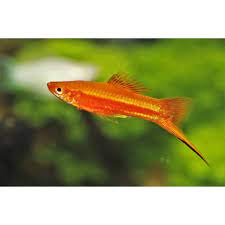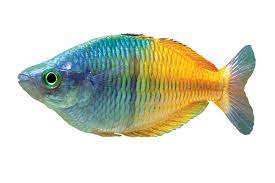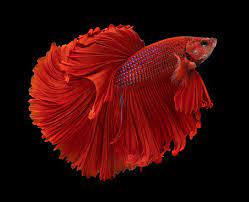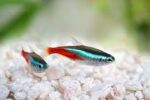The Easiest Fish to Take Care Of
Freshwater fish are the easiest fish to take care of. You don’t have to worry about maintaining constant saline levels or using heaters. They prefer cool water. Here are some tips to help you choose the right fish for your aquarium. Freshwater fish are one of the most popular pet choices for new owners. Read on to discover more about these wonderful creatures. In this article, we’ll discuss some of the easiest fish to keep in your aquarium.
Platies are the easiest fish to take care of:
Despite their easy care requirements, Platies can be stressful if you don’t know what to do to avoid stress. While they can be frightened of people, adult Platies are generally not bothered by human presence in the tank. In addition to being easy to care for, Platies are an excellent addition to any tropical fish tank. For best results, choose a tank with the correct size and number of males and females, and provide good nutrition.
Platy fish are easy to care for and can come in many colors. Platies can be prolific producers. They will produce babies and hatch them from eggs within their bodies. Unlike some other fish, Platy fry does not require special care. In fact, adult Platys usually eat the fry. Generally, they return to their community tank to raise their fry. Keeping Plates in a community tank is an easy way to ensure that fry will be safe from predators.
Platies are the easiest fish to take care of and keep. You should choose a tank that can accommodate at least three inches of space. Then, you should add live plants to make hiding places for the fry. Then, you can put the fry in a breeder tank or grow-out tank. They will love a group of other community fish as long as they don’t have to share the tank with them.
Platy fish are part of the Xiphophorus genus and are easy to maintain. They come in a wide range of colors and are ideal for first-time tropical fish tanks. Their relatively low cost makes them a great choice for beginners. They are also relatively hardy and cheap, making them a good option for a child’s first tropical fish tank. As part of the Poeciliidae family, platyfish are related to guppies and mollies.
Swordtails
Swordtails are one of the most popular freshwater aquarium fish. They can reach reproductive maturity at a young age of three months and can give birth to up to 50 fries in one spawning. You can tell if your swordtail is pregnant by looking for a dark gravid spot around her belly. Pregnant swordtails are usually hard to move, and they may not eat or drink enough. Swordtails are not a good choice for beginners, as their low maintenance needs make them difficult to care for.
Swordtails are best kept in water that contains a moderate amount of current. Their natural habitat is fast-moving and filled with dense plants and rocks. This gives them a place to hide and shade. Swordtails can be stressed by too much water change, high levels of ammonia, and too much nitrate. A good way to prevent outbreaks is to keep your tank at a constant temperature and perform water changes every two weeks.
Swordtails don’t like to eat the same food as other fish in the tank, so a regular feeding schedule is crucial. Swordtails will become more active during feeding times, and they’ll start to notice the feeding schedule. You should also clean the tank after each feeding to avoid pollution. Swordtails are livebearers, so breeding can be easier if you have an existing breeding tank and a breeding pen.
Swordtails are a good choice for beginners because they’re easy to care for and can be found in nearly every fish store. They can live in water as salty or as fresh as 50 degrees Fahrenheit. Their native habitat includes plenty of plants and rocks and is best suited to tropical freshwater bodies. For best results, you should aim to mimic these conditions in your aquarium. The more natural the water is, the more likely swordtails will thrive.
Rainbowfish
Although rainbowfish are incredibly popular as pets, the average person may not know much about them. In fact, the average person may not even be aware of the common names of these fish. This article will give you the inside scoop on caring for these beautiful fish! Read on for some tips and tricks to keep your new pet healthy and happy. Rainbowfish are easy to keep, but they do require some maintenance. It’s a good idea to rotate the type of food you feed them on a daily basis.
Rainbowfish require a freshwater aquarium with a temperature range of 72 to 86 degrees Fahrenheit. Water pH levels should be 6 to 7, with a maximum of 0 ppm of ammonia or nitrites. Because fish don’t have an immune system, their water quality can affect their health and even cause death. If you choose a tank with the proper water parameters, you can ensure that your fish will be healthy and happy.
The best food for a Madagascar rainbowfish is protein-rich fish food. The fish can accept live or frozen foods, but you should supplement at least twice a week. Make sure to change the water in the tank several times a day, as this fish likes to swim around and play. Also, be sure to give your aquarium a good cleaning every few weeks! The most important part of caring for your rainbowfish is to feed them regularly and make sure they are always happy and healthy.
A Boesemani rainbowfish is the most common fish species for beginners. It’s an egg scatterer, so the female will lay eggs, while the male will fertilize them and spawn the fry. Males tend to ignore their young, so you may want to introduce more than one rainbow per tank. A school of rainbows can quickly fill a tank. They also make a great pet, because they’re extremely social and fun to watch.
Betta fish
Bettas are easy to care for, as long as you have the right tank for them. They don’t need much room in their tank, though bigger tanks are easier to maintain. A mini cube kit, LED BettaBow 2.5, or Triscape are good options for beginners. Bettas do not require a filter, but you can use an additive to create a proper cycle in your water. Healthy bacteria will keep your tank clean, and will also eliminate ammonia.
The water temperature should be between 77 and 80 degrees Fahrenheit. To achieve this temperature, you should place the tank near a heat or air-conditioning vent. The water should also have a pH of six to eight, close to neutral. Betta fish need water changes regularly, and water pH must be between six and eight. You should also have your tank water dechlorinated to prevent the build-up of harmful chemicals. Ammonia, nitrate, and nitrite levels should remain between zero and 40 parts per million.
Once you have purchased a tank, it is time to prepare its water for your new betta. Make sure to add water from the tank to the water container so that it will adjust to its new environment. You can also place a small float cup in the tank for about fifteen minutes before adding your betta to the tank. If you find your betta to be acting strange, you should remove it and replace it with fresh water.
The most important part of caring for a betta is keeping the tank clean. A daily 20% water change can help with many problems, and it’s easy to maintain the proper pH level for your new betta. Aside from the proper water temperature, it’s important to provide the right amount of food. After this, you should remove any food particles that may have accumulated on the substrate or gravel.
Neon Tetras
If you’re new to aquarium keeping, you might wonder how to care for neon tetras. Neon tetras require dark water with plenty of plants and roots and hiding places. They also thrive in a dark substrate that mimics their natural habitat. Neon tetras are omnivores, so you can feed them animal and plant food. This article will discuss some of the most important details about caring for neon tetras.
One important fact about neon tetras is that they breed every two or three days. It is best to spawn them when they are small and unspoiled, as they will quickly grow to adulthood. When they reach six to eight months, you can feed them brine shrimp and chopped-up blood worms. Just be sure not to overfeed your neon tetras, since they are highly susceptible to ammonia and nitrate.
You can feed your neon tetras once per day, either in the morning or at night. Don’t overfeed them, as this will result in undigested food that will eventually turn to rot. It will also throw your tank’s chemistry out of whack. The consequences can be deadly for your fish. Therefore, if you’re unsure about how to feed neon tetras, read this article carefully.
The basic requirements for keeping your neon tetras include ensuring the aquarium is clean and has a high pH level. You must also avoid adding peat or other debris to your aquarium since this will cause the water to turn swampy and unhealthy. It is also essential to change the water on a regular basis so that you don’t have swampy water in your aquarium. If you have never kept a tetra before, now is the perfect time to purchase one.

